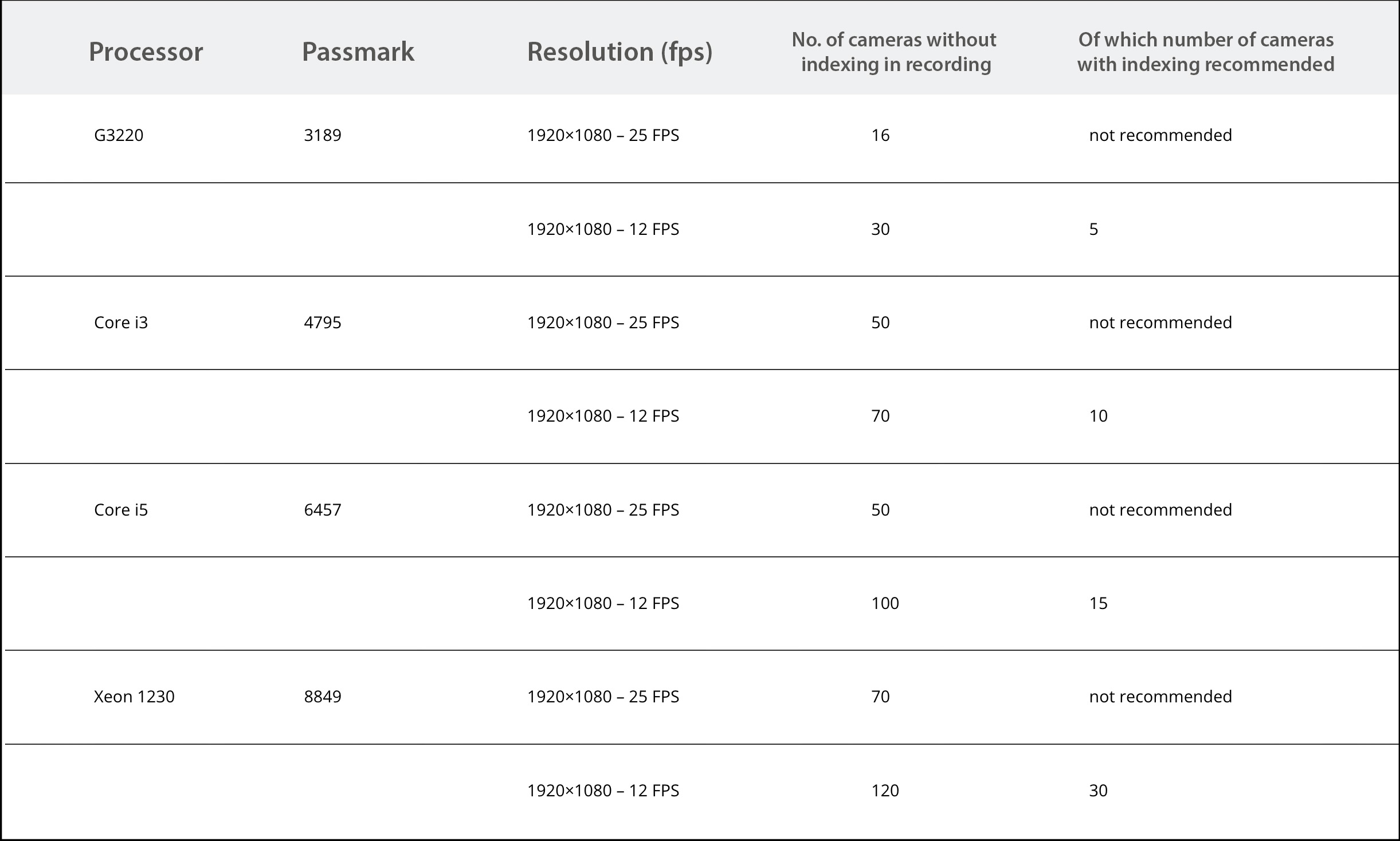Sizing
Server
Every server has its software and hardware limitations. We have identified them so that you can build the best possible architecture for your installation.
Version 9.16.0.0
No software limit on the number of cameras. The only limits are imposed by the power of the hardware.
Unlimited storage on external SAN.
Distribution of the cameras on several servers and a single operating interface via the cluster option.
– Recommended memory sizes
CamTrace SIRION 16 uses the memory (RAM) to improve the performances of the system. The consumption of memory depends strongly on the requested treatments.
– WITHOUT motion detection, indexing (image analysis) or Jpeg recompression:
Basic memory required for 20 Full HD cameras = 4 Gb
Basic memory required for 20-50 Full HD cameras = 8 GB
Basic memory required for 50-100 Full HD cameras = 16 GB
– WITH motion detection, indexing (image analysis) or Jpeg recompression, it will be necessary to add :
Image size x3 (RGB component) * fps * buffer duration in sec = total value in bytes (RAM)
Example: 20 cameras in 720p in 30 fps
(1280 * 720 (size) * 3 * 30 (fps) * 10 (sec buffer)) x20 = 5 GB to be added
In total 4 GB + 5 GB = 9 GB
Processor

Writing speed
We are talking here about the bandwidth of physical writing on disks.
On a RAID volume (or a disk), the maximum continuous write speed is 80 MB/s or 800 Mbits.
Based on 500 Mbit/sec steady state. The latter value takes into account active erasure and a reserve of playback bandwidth for fast consultation of recordings. This value is valid with H24 7200 rpm SATA disks.
On an external SAN server, use 60 MB/sec per RAID volume for a fiber connection.
Network bandwidth
400 Mb/sec per Gb network card
The vast majority of CamTrace hardware includes two Gb network cards. Servers can accommodate more. It is possible to configure link aggregation to couple several cards on the same network.
Re-transmission of feeds by CamTrace
In general, the re-emission of flows is not a bottleneck. A CamTrace server is capable of capturing and re-transmitting several hundred real-time streams simultaneously.
Re-transmission of streams by CamTrace
In general, retransmission of streams is not a bottleneck. A CamTrace server is capable of receiving and retransmitting several hundred real-time streams simultaneously.
Client stations – decoding
When decompressing and displaying an H264 camera mosaic with the CamTrace client software, the decompression mode is selectable by the operator from CPU, mixed CPU GPU and full GPU.
CPU and mixed modes work with most graphics cards under Windows, iOs and Linux.
The full GPU mode only works on Windows with Nvidia cards.
The tests below are given by default for CPU mode. The mixed mode is indicated by “CPU + GPU”.
PC2000 Linux client – G3320 processor – integrated graphics card on motherboard
4CIF 20 fps camera with 40% compression
25 stream mosaic: smooth display (bandwidth: 22Mbit/sec)
PC5001 Windows core i5 client – Nvidia GT630 1GB graphics card
Camera in 4CIF 20 fps 40% compression
50 stream mosaic: smooth display (bandwidth: 70Mbit/sec)
PC6001 Windows core i7 client – Nvidia Quadro K620 2GB graphics card
Camera in 4CIF 20 fps 40% compression
Mosaic 25 streams +25 streams +25 streams (total of 75 streams): smooth display (bandwidth: 80Mbit/sec)
